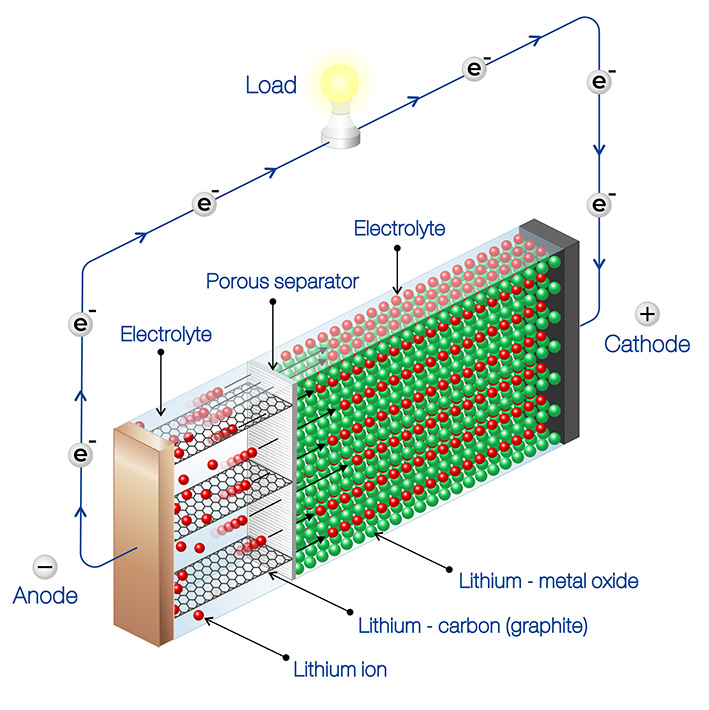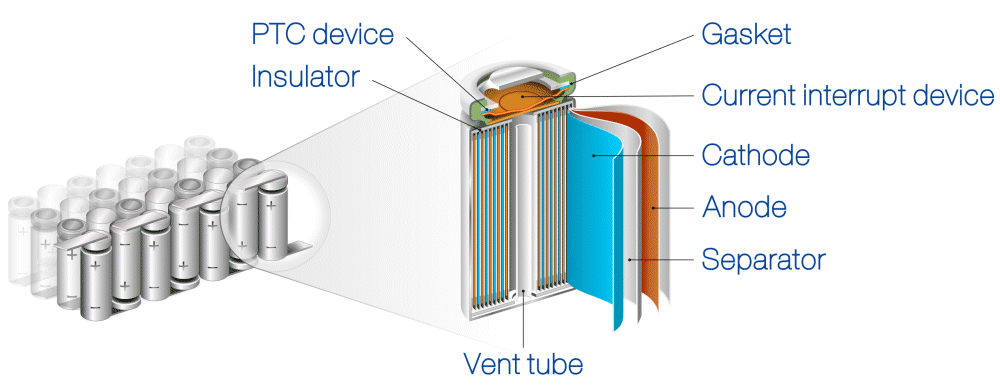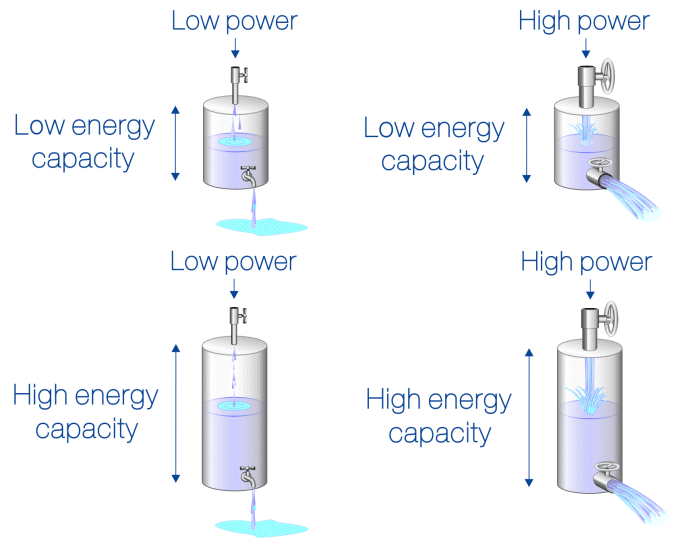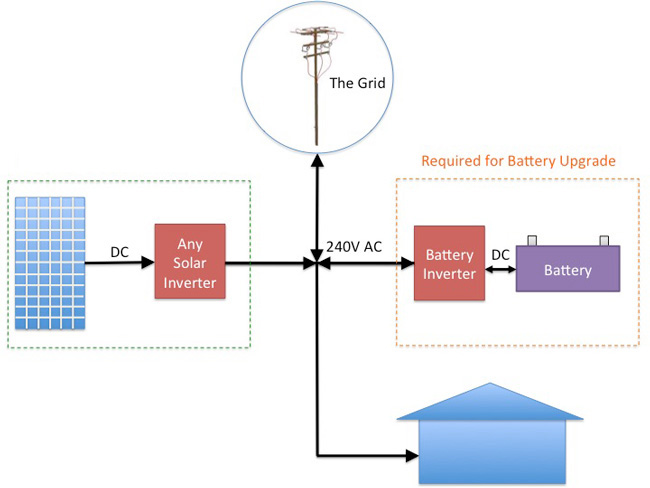Solar Batteries 101, Part 1: Understanding Batteries
By Finn Peacock – Chartered Electrical Engineer, Ex-CSIRO, Founder of SolarQuotes.com.au
Last Updated: 19th Dec 2025
Are you thinking of going solar and wondering whether you need a home battery too? Or maybe you have solar panels installed and want to know what’s involved with adding residential energy storage.
I’ve developed this three-part ‘Batteries 101’ beginners guide to get you up to speed as quickly as possible:
- Part 1 – Understanding Solar Batteries – this page – goes through the fundamentals of home energy storage.
- Part 2 – Buying Batteries – is full of useful information to help you buy the right solution for the right price.
- Part 3 – Owning Batteries – sets expectations for your energy storage-powered lifestyle.
If understanding home energy storage is not a priority for you, skip to part 2 of my guide for practical advice on buying a solar battery.
- Why get a home battery?
- How do batteries work? Anatomy of a battery storage system.
- Power vs Energy – Do you need a sprinter or a marathon runner?
- Lead-acid? Lithium-Ion? Flow? Which technology to choose?
- Adding a battery to your solar system – AC vs DC coupling.
- How do solar batteries save you money?
1) Why get a home battery?
There’s a number of reasons why you’d want to add a battery to your home. Let’s go through them:
1) Use your solar after sundown: Batteries let you store solar energy to use in the evening and through the night. With a home battery, you’ll import less energy from the grid and pay less money to your electricity retailer.
2) Benefit from Time-Of-Use Tariffs: Time-of-Use (ToU) tariffs are becoming more common (and may be mandatory). These tariffs slug you with high per-kWh charges during the late afternoon and evening (e.g. 5pm – 9pm) when demand on the electricity grid peaks.
If you don’t have a battery, Time-of-Use tariffs are likely to increase your bills substantially. But an appropriately-sized battery with enough solar panels can power you through these peak periods so you can dodge most – or all – of the peak pricing. You then benefit from off-peak pricing later at night if you have to draw from the grid.
Some battery systems (e.g. Tesla) are smart enough to top up with off-peak grid electricity when it makes sense. For example, if it looks like there won’t be enough sunshine to charge it the following day.
3) Backup: Most (but not all) batteries will also back up important circuits in your home. If a blackout hits – you can ride it out in style:

My house was the only one on the street with the lights on in a blackout – thanks to my Tesla Powerwall.
4) Join A Virtual Power Plant: Owning a battery allows you to join a virtual network of other battery owners. Together you can use your combined capacity to support the grid by charging and discharging when the grid needs support. This helps integrate more renewables into Australia’s grid and you get paid for your ongoing help too.
2) How do batteries work? Anatomy of a battery storage system.
A battery is an electrochemical “sandwich” used to store energy. One bread slice is the anode, and the other is the cathode. Between them is a filling called the electrolyte and a separator.
It’s easy to remember the cathode is positive because there are many cat-lovers. They’re positive about them. The anode is negative, like my Aunt Ann, who complains about everything.
Negatively charged electrons concentrate at the anode. Because opposites attract, they want to go to the positively charged cathode but the separator in the filling blocks electrons from taking the short path through the battery.
Connecting the anode and cathode with wire allows electrons to flow through it. This flow of electrons is what we harness as electricity.
In rechargeable batteries, you use an external energy source to reverse the flow of current. This stores that energy for later use.
There are many ways to arrange the sheets of cathode, anode, and separator in a modern lithium-ion solar battery. They are usually constructed like a jam roll inside metal cylinders called cells. A home energy storage system can have thousands of these cylindrical battery cells.
3) Ensure your battery has enough power AND enough energy.
In part 1 of my “Solar 101” guide, I explain the fundamental difference between power (kW) and energy (kWh) – and it’s important to understand this.
When it comes to batteries, a useful analogy is water flowing through a pipe into a container.
- Power (kW) is how fast water flows through the pipe, into or out of the container.
- Energy (kWh) is the amount of water the container can hold.
Again, understanding the difference between power and energy is super-important. It can mean the difference between choosing the right home battery for your needs and a dud.
There are all kinds of solar batteries out there; each with its own combination of power output vs energy stored.
Most solar batteries have a maximum continuous power output of 5 kW. My Tesla Powerwall 2, for example, has a 5 kW output. If I ever want a 10 kW power output from my battery system, I will need to add a second battery.
Be aware of the power and energy needs of your home when choosing a home battery.
If your solar battery can only provide 3 kW and your home needs 5 kW, you’ll need to get the power shortfall from the grid. For example, I have a Finnish sauna in my home that pulls 7 kW. I can’t run it entirely off my Powerwall 2, because that only outputs 5 kW. That means I can’t have a sauna in a blackout. What a hardship.
4) Lead-acid? Lithium-ion? Flow? Which technology to choose?
Until 2015, if you wanted to install energy storage, you were most likely living in a rural area and looking to go off-grid.
The dominant technology up to then was lead-acid. It required a big, heavy bank of batteries installed in a dedicated room (usually a shed) and regular maintenance – not exactly ‘set and forget’.
Since then, advances in lithium-based tech have resulted in these batteries dominating the home energy storage market for a few reasons:
- Superior performance (better power output and depth of discharge)
- “Set and forget”, maintenance-free operation.
- Longer warranties
- Competitive pricing
- Smaller, lighter
Because of this, nearly all solar battery installations for homes are using some variant of lithium tech these days.
The two major lithium technologies are Nickle Manganese Cobalt (NMC) and Lithium-Iron Phosphate (LiFePO). The Tesla Powerwall 2 uses NMC cells, while the Powerwall 3 uses LiFePO.
Note: Confusingly NMC and Lithium Iron Phosphate are both variants of Lithium-Ion battery technology.
Pro-tip: People always ask me about alternative technologies, like nickel-iron or flow batteries. I’m yet to see an alternative technology beat lithium-ion in both performance and price. But it’s possible sodium-ion batteries will beat them within the next few years.
So – what battery technology should you choose? Unless your home has specialised needs, lithium-ion will be the way to go.
Pro-tip: All home batteries sold in Australia must meet strict fire safety standards! But if you’re still worried, lithium-iron (also called LFP or LiFePO4) is harder to catch fire than other lithium-ion chemistries such as NMC.
5) Adding a battery to your solar – AC vs DC coupling
As explained in my Solar 101 guide, solar panels output DC electricity. But the appliances in your home use AC electricity. The job of a solar inverter is to convert the DC from the panels into AC used in your home.
Batteries charge and discharge DC electricity. So – how do you integrate home energy storage into a solar system?
There are two ways:
DC coupling: You use a single ‘hybrid inverter’ that controls both your solar panels and your battery.
The hybrid inverter:
- converts the DC current from the solar power system into DC that can charge the battery.
- converts the DC outputs of both the battery and solar panels into the 230 Volts AC your home needs.
- converts the grid’s 230 V AC into DC to charge the battery – in case you ever want to charge your battery from the grid.
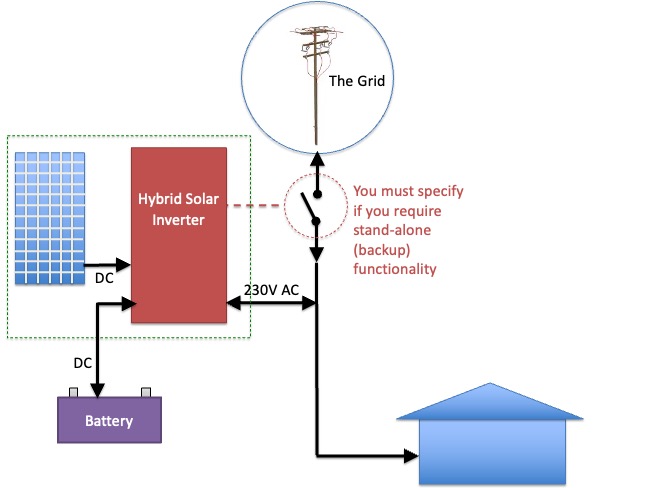
Hybrid inverter – DC coupling
Hybrid inverters, used for DC coupling, are more expensive than regular solar inverters.
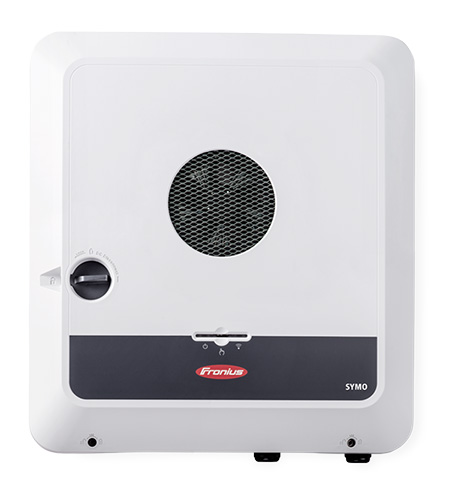
The Fronius Gen24 hybrid inverter
AC coupling: An additional “battery inverter” converts the AC output of the solar inverter back into DC to charge the battery.
Some home energy storage options, such as the Enphase Battery, come with a battery inverter built-in. The Enphase battery can only be AC coupled. Others, like Pylontech, need an external battery inverter to be installed on the wall next to them.
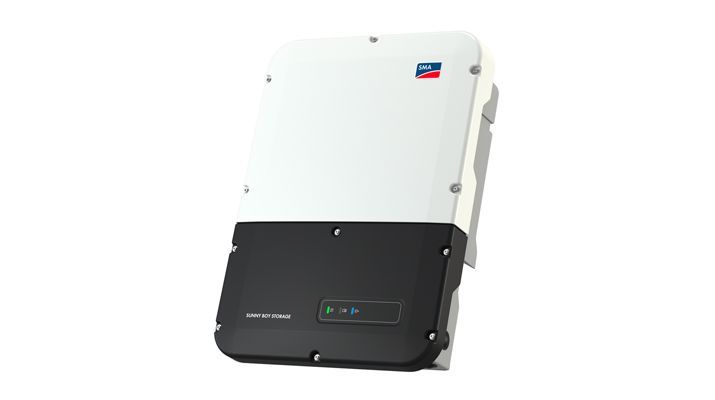
An example of an AC coupled battery inverter – the SMA “Sunny Boy Storage”
Advantages of DC coupling: There are ‘fewer stops’ along the way with a DC-coupled system. Fewer stops = fewer losses = higher efficiency.
Disadvantages of DC coupling: Batteries pair with specific hybrid inverters. So a spiffy new future energy storage product may not be compatible with the hybrid inverter you buy now. This isn’t an issue if you’re planning on buying a solar + battery system in one hit.
Advantages of AC coupling: It is solar-inverter agnostic. You can retrofit an AC-coupled battery to any existing solar power system.
Disadvantages of AC Coupling: There are ‘more stops’ with the DC->AC->DC conversion, so it’s a little less efficient. Another drawback of AC coupling is rules on system sizing from your local electricity network.
For example, a Distribution Network Service Provider (DNSP) may allow a maximum of 10 kW inverter capacity per phase, but also count battery inverters towards the 10kW limit.
Let’s say you have an existing 7 kW solar system with a 6 kW inverter. You want to add a Tesla Powerwall 2, which has a 5 kW inbuilt inverter. The DNSP may say you can’t because 6 kW (solar inverter) + 5 kW (Powerwall 2 battery inverter) = 11 kW total inverter capacity.
DC coupling bypasses this limit because there’s only one inverter that handles both the battery and solar power.
Pro-tip: My battery storage comparison table lists the prices of various options. Importantly, it does not include installation costs. The cost of extra electronics, such as a battery inverter, can mean a $6k home energy storage system winds up costing $10k installed.
If you already have an existing solar system with a hybrid inverter that’s compatible with the battery you want, you may save a grand or two on the cost of installing the battery.
6) How do solar batteries save you money?
Home energy storage systems store surplus solar energy for use at night; meaning you charge your battery with ‘free’ solar electricity generated during the day. At night, instead of drawing from the mains grid, you use the energy stored in your battery.
If you are on a time-of-use electricity plan, you may be able to dodge the often crazy-expensive evening peak tariff period altogether. If your tariff has an expensive morning-peak, they can avoid that too – sometimes intelligently charging on cheap grid electricity after about 1 am.
With a big enough solar and battery system, you may never pay an electricity bill again with minimal grid imports and solar exports covering your daily service charge.
If you’re part of a Virtual Power Plant (VPP), your batteries also support the grid and earn credits (which can be thought of as a bonus feed-in tariff) for doing so.
But what’s the catch in all this?
Well – the cost of enough solar battery storage to completely cover your electricity bill is high. The bigger your bill, the bigger the energy storage system you’d need.
I go into more detail about this in part 2 of my battery guide.
The next step
I hope you found this guide to the basics of home energy storage useful. Next up is part 2 – covering everything you need to know when buying solar batteries.
If you have any questions after reading this – feel free to reach out to me directly at [email protected]
